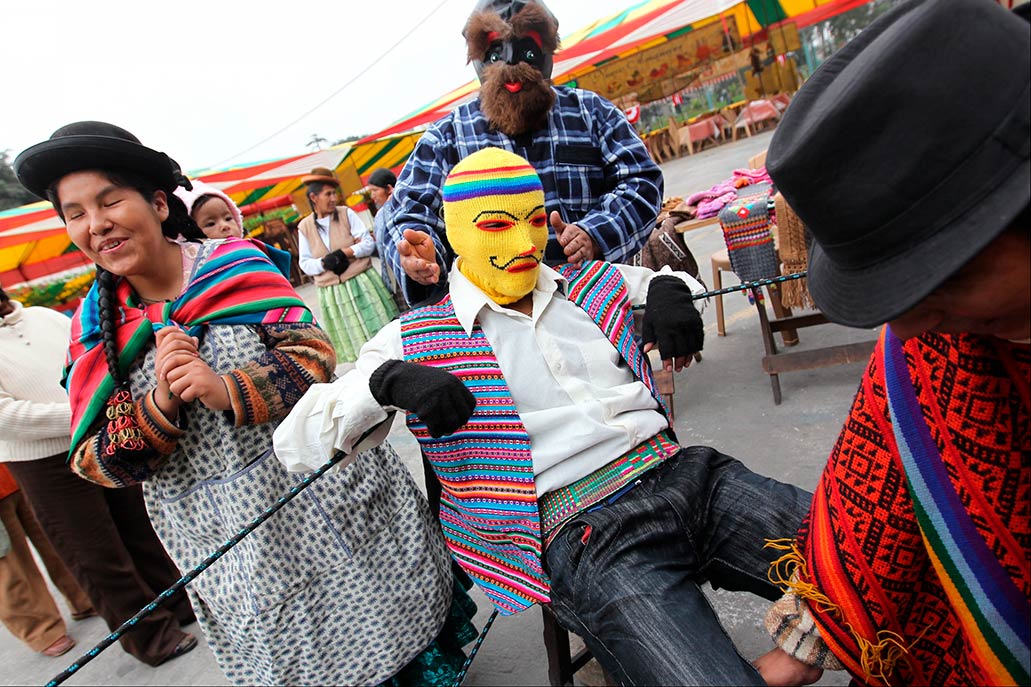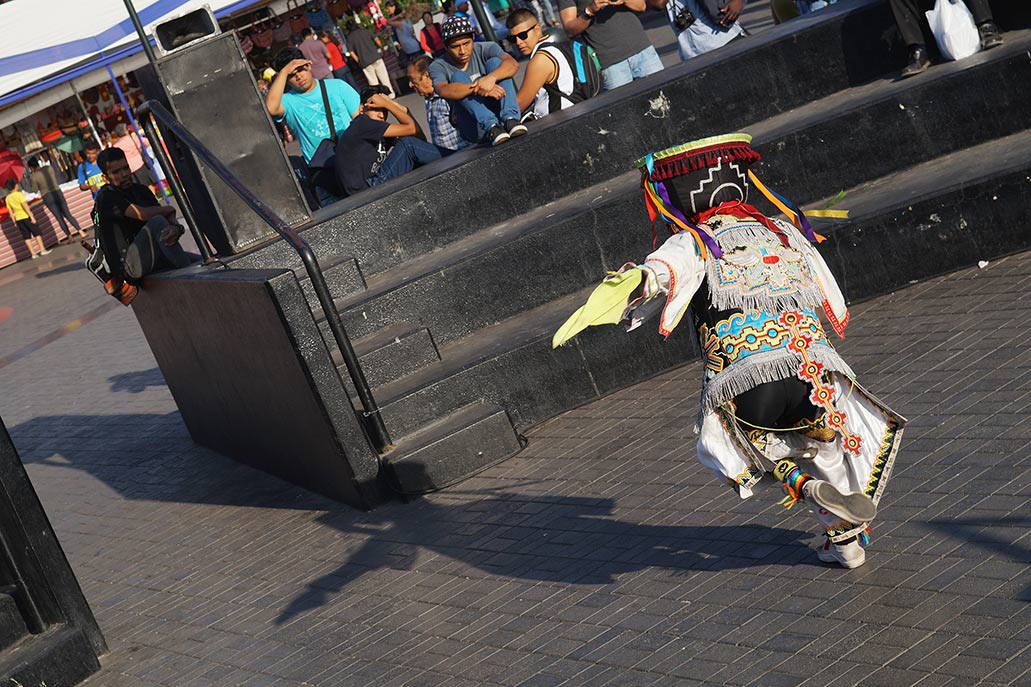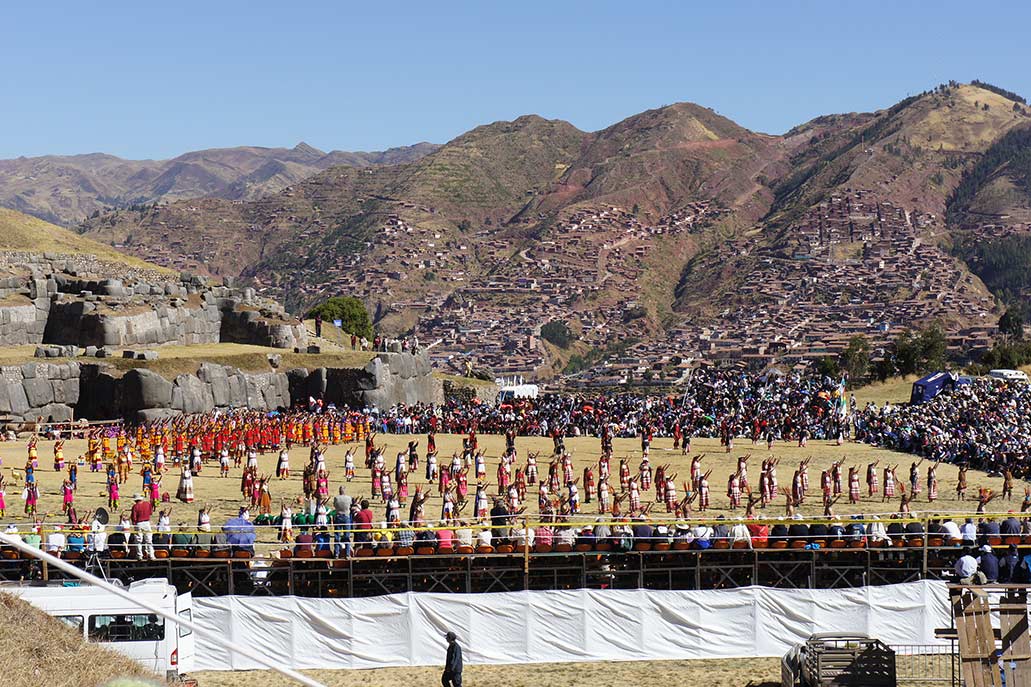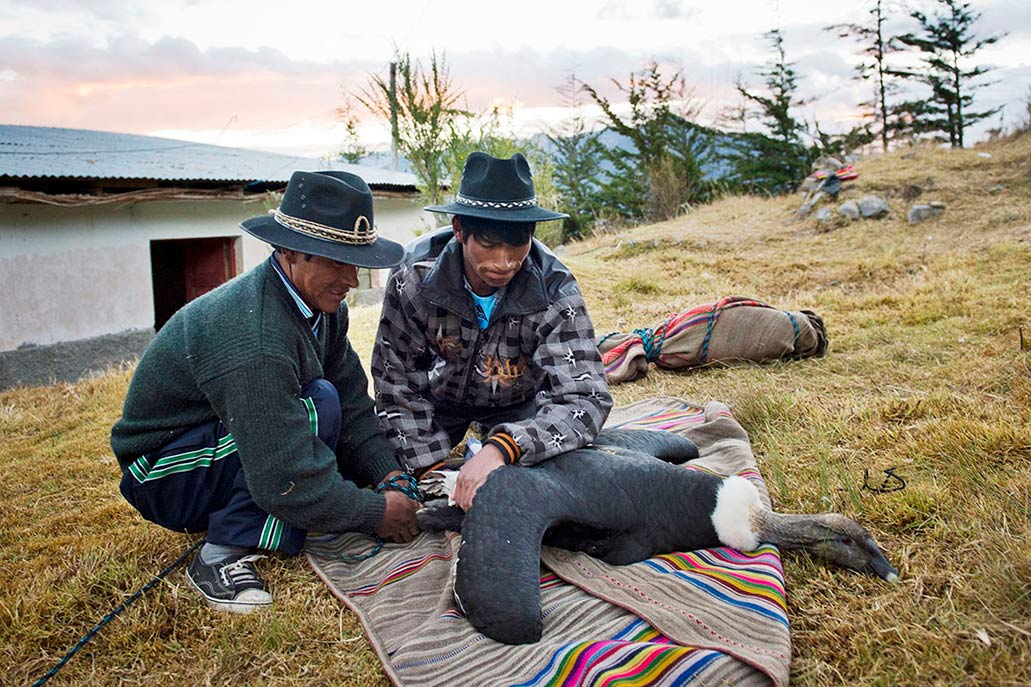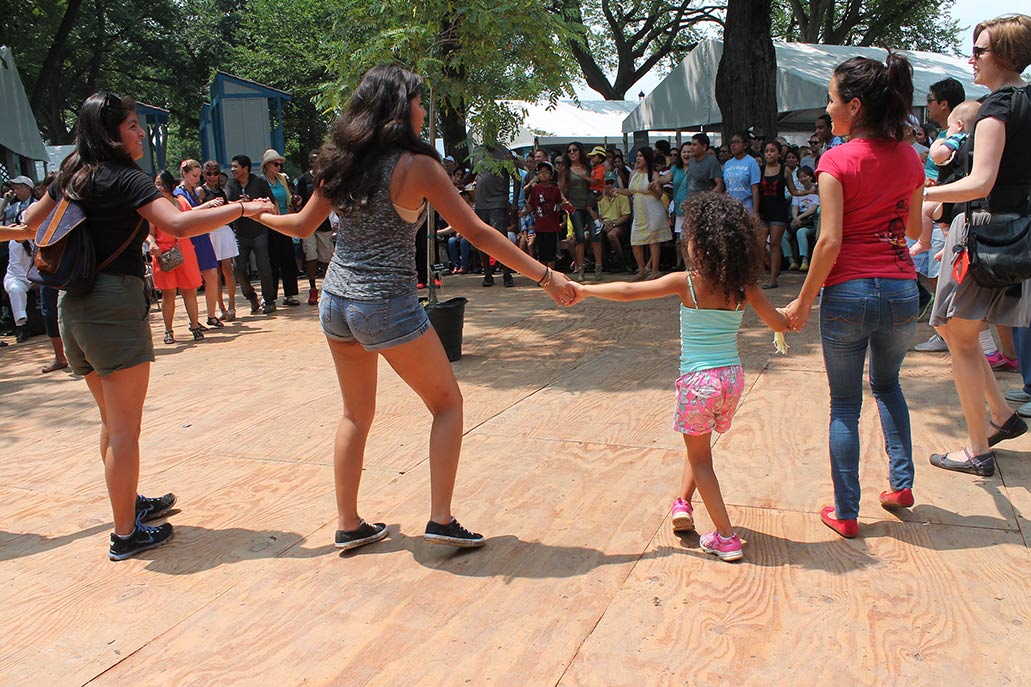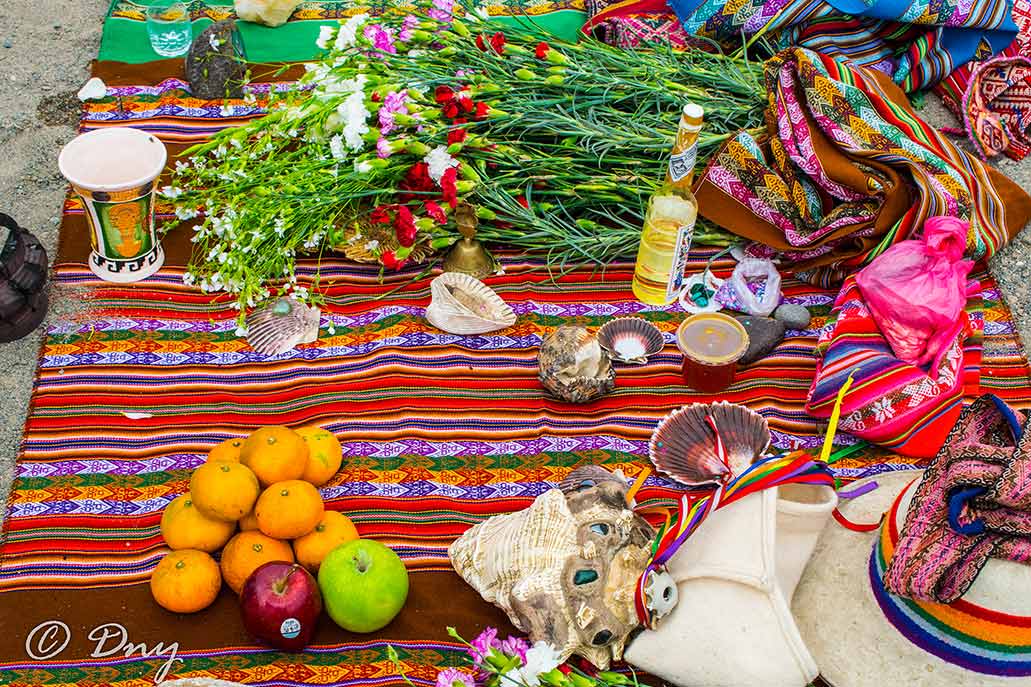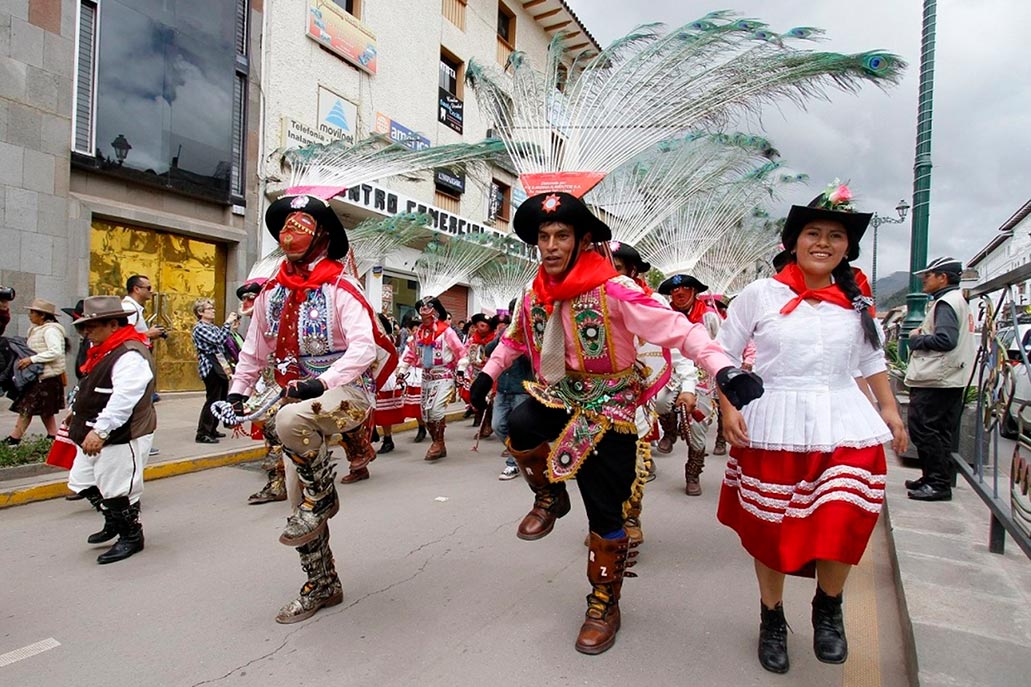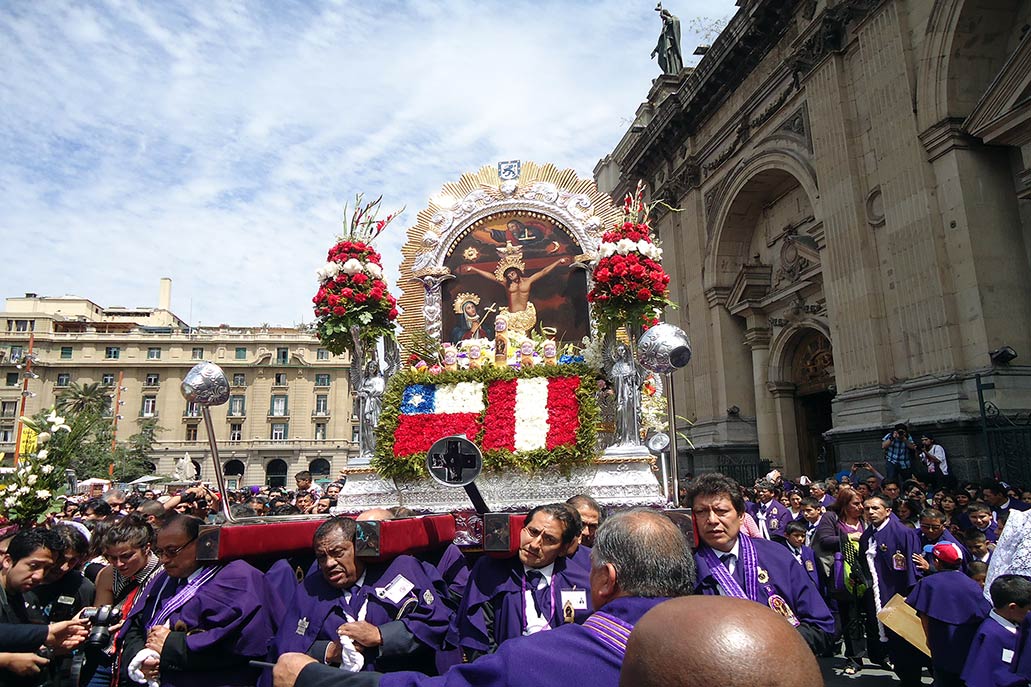The 8 strangest customs in Peru
Peru is a country with a great history and, of course, customs and traditions. These date back hundreds or thousands of years and are related to the country’s past such as the colonial era, the Inca era, the pre-Inca era and more. Some of the most extravagant expressions are: the scissors dance, the Inti Raymi in Cusco, the Yawar Fiesta, the multiple religious processions that take place throughout the country and more. Learn about the 8 strangest customs in Peru!.
Content
The festival of the Virgin of Candelaria in Puno – One of the most famous – and striking – festivities and traditions of Peru is the festival in honor of the Virgin of Candelaria in Puno. This massive event is characterized by the great diversity of dances and musical groups. One of the most famous dances is the ‘diablada puneña’. It is estimated that up to one hundred thousand dancers and nearly 10 thousand musicians participate. It is celebrated every year in the month of February. It is considered Intangible Cultural Heritage of Humanity by UNESCO (since 2014).
The dance of the scissors
The scissors dance is one of the oldest customs in Peru. According to various studies, its origins date back to pre-Inca times, about 10 thousand years ago. The dance is related to the sowing and harvest times in the Andean towns of southern Peru. It is characterized by the contortion of different physical tests to the rhythm of a harp and violin. The dancer carries a scissors in his hand.
In 1995 the scissors dance was included in the list of Cultural Heritage of the Nation. In 2010 it was also included in the list of Intangible Cultural Heritage of Humanity by UNESCO. Around this dance there is a mythical explanation related to the Andean gods of ancient Peru. The Peruvian writer José María Arguedas popularized this dance with his story The agony of Rasu Ñiti (published in 1961).
- Where to see?: In the towns of southern Peru: Ayacucho, Apurímac and Huancavelica.
- More information: Every December 27 in Huancavelica the Scissors Dance Day is celebrated. That day there are shows of this dance in various regions of Peru.
The Inti Raymi
Inti Raymi is a Cusco religious festival that dates back to the Inca era in the 15th century. This ceremony is held every June 24, which, in Inca times, took place every winter solstice, when the sun is closest to the earth in the southern hemisphere. The Inti Raymi was born from a proposal by the Cusco artist Agustín Espinoza. The first staging of this celebration took place in 1944.
The Inti Raymi takes place in three stages, following the festival that the Incas did. The first staging is in the Coricancha temple. The second in the Plaza de Armas of Cusco. The third, and most important, in the fortress of Sacsayhuamán. Hundreds of Cusco actors and actresses, as well as music groups, participate in the three shows. That day, June 24, is a holiday (non-working day) throughout the Cusco region.
- Where to see?: In the city of Cusco every June 24.
- More information: The Inti Raymi show in Coricancha and Plaza de Armas is free for everyone. The show in Sacsayhuamán, the longest (2 hours) can only be seen by paying a ticket.
The Yawar Fiesta
The Yawar Fiesta (blood festival, in the Quechua language) is a bullfighting festival practiced in the Andean towns of southern Peru, which has colonial origins. In the celebration, a condor is placed on the back of a brave bull. It is believed that this festival represents the rejection of the Andean settler against the abuses of the Spanish landowner. The condor represents the Andean man while the bull (an animal introduced in the colony) represents the Spanish gamonal.
During the Yawar Fiesta it is believed that, if the condor dies during the festival, this would bring misfortune for the Andean town. For this reason, this great bird is treated with respect, cared for and, finally, released. The Peruvian writer José María Arguedas popularized this festival in his work Yawar Fiesta, in which he describes the abuses of the gamonales. Despite some demonstrations that criticize this festival, it continues to be celebrated in Andean towns in the south of the country.
- Where to see?: This festival takes place every July 26 in the town of Coyllurqui (Apurímac) or in Cotabambas (Apurímac).
- More information: In Peru, since Spanish times, hundreds of bullfights have been celebrated. However, the symbolism of the bull and the condor is only carried out in a few towns such as Coyllurqui and Cotabambas.
The takanakuy
Takanakuy is a traditional festival of the people of Chumbivilcas in the Cusco region, although it is also practiced in other Andean regions of Apurímac. Takanakuy means ‘hit each other’. This custom is characterized by fistfighting and kicking duels between members of the community. The fights, within a festive environment, serve to settle disputes between community members.
Takanakuy takes place every December 25. That day, dances are also celebrated with typical costumes where up to five traditional characters participate: the majeños, the q’arawatana, the blacks, the langos and the q’ara gallo. The representative music of the celebration is the huaylia, whose origins also date back to colonial times. Little by little, takanakuy is expanding in the regions of Arequipa, Puno and even Lima.
- Where to see?: Every December 25 in the town of Chumbivilcas in the Cusco region.
- More information:: The fight during takanakuy is based on kicks and punches with the aim of knocking down the opponent, thus ending the fight. Each round lasts 3 minutes.
The yunzas
Yunza is a mainly Andean tradition (although also on the coast and jungle) that is practiced during carnivals (in February and part of March) in all the towns in the north, center and south of Peru. The yunza is a tree or tree trunk decorated with balloons and all kinds of gifts for the residents of the community. The objective is to cut down the tree with machetes through dance and music. This is how we seek to unite all members of the community.
The origins of yunzas date back to pre-Inca times. There is evidence of this practice in the Mochica culture (100 BC – 700 AD), Chancay (1,200 AD – 1470 AD) as well as the Inca (1,200 AD – 1533 AD). The festival includes dances and music around the tree. Generally the yunzas are held on Carnival Sundays. Those in charge of giving the tree are the so-called ‘butlers’ or godfathers’.
- Where to see?: Carnival Sundays in all the Andean towns, but also on the coast and jungle of Peru.
- More information:: The carnival also has influence from European festive practices such as the so-called ‘Ash Wednesday’. In some districts of Peru it is prohibited due to some records of people injured during the holiday.
Payment to the land
The ceremony of payment to the land is carried out in all the towns of the Andean region as an offering in gratitude to Pachamama or mother earth in the Quechua language. This practice is one of the oldest since it dates back to ancient Peru, more than a thousand years ago. The ritual is based on a concept of reciprocity in which man thanks the earth for all the food products obtained from it.
Payment to the land is characterized by offerings made of coca leaves, cereals, chicha (fermented corn), animal fat, llama fetuses, and more. Today, despite the fact that the Spanish strongly punished the practices that they considered ‘pagan’; The Andean inhabitants continue to practice payment to the land. Even every year on August 1, Earth Day is celebrated with multiple offerings to Pachamama.
- Where to see?: Every August 1 in the Andean towns the day of ‘Pachamama’ is celebrated with offerings of payment to the land.
- More information: The person in charge of directing the ‘payment to the land’ is the shaman, who knows the ceremony and is even believed to be able to communicate with the Andean gods (mountains, land).
The huaylia
The huaylia is a traditional Peruvian dance whose origin dates back to the cultures of ancient Peru (hundreds of years ago) but also with influences from Spanish culture during the Viceroyalty of Peru. It is celebrated in small Andean towns every December 25 through high-pitched songs by the women of the community, as well as shoemakers and rhythmic movements.
The main regions where the traditional huaylia is practiced are: Apurímac, Ayacucho, Huancavelica and Cusco. The Quechua songs express the joy at the birth of the baby Jesus (Manuelito child in the Andean culture) as well as the rejection of the tyranny of the landowner or gamonal against the Andean settler. It stands out for the beautiful colors of the women’s costumes, as well as for the wooden canes decorated in various colors.
- Where to see?: The huaylia is celebrated in the different towns of the Andean regions of Apurímac, Ayacucho, Huancavelica and Cusco.
- More information: In huaylia no musical instrument usually takes part, only the voice and the tapping of the participants. Its name in Quechua means ‘hallelujah’.
Processions
Peru is a Catholic country whose religion was established with great force and violence by the Spanish in the 16th century. As in many countries around the world, processions are important displays of faith to different religious figures. However, in Peru processions have a very ancient origin. In the Inca era, for example, the mummies of the Inca rulers were carried on litters and in a procession through the city of Cusco, a practice that was adapted to the new religious beliefs in Spanish colonialism.
Today the most famous processions in Peru are in honor of figures such as: the Lord of Miracles, the Christ of Charity, the Risen Christ, the Lord of the Holy Sepulcher, the Lord of Tremors and more. In Cusco the famous Corpus Christi takes place in which the main fifteen religious figures from the city’s temples are carried in procession to the Cathedral. It is believed that this practice has its origins in the Inca era, with the procession of Inca mummies.
- Where to see?: Procession of Crosses of Porcón (Cajamarca), procession in Yanque (Arequipa), procession of Dawn in Huamanga (Ayacucho), procession of the Lord of Miracles (Lima), procession of the Lord of Tremors (Cusco).
- More information:: The largest procession is, without a doubt, that of the Lord of Miracles in the city of Lima. This religious festival is celebrated in the month of October.
By Machupicchu Terra – Last updated, October 24, 2023
